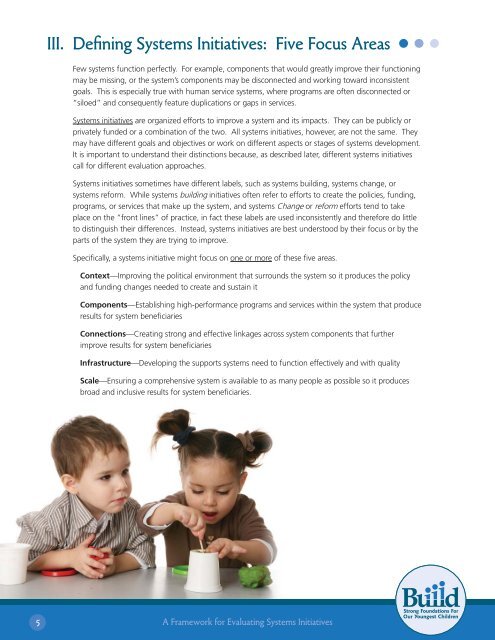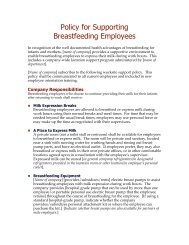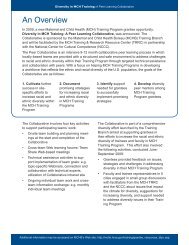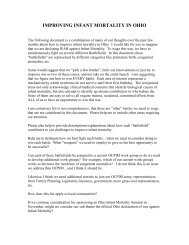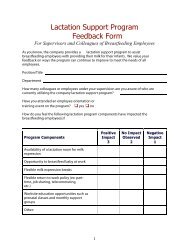A Framework for Evaluating Systems Initiatives
A Framework for Evaluating Systems Initiatives
A Framework for Evaluating Systems Initiatives
- No tags were found...
You also want an ePaper? Increase the reach of your titles
YUMPU automatically turns print PDFs into web optimized ePapers that Google loves.
III. Defining <strong>Systems</strong> <strong>Initiatives</strong>: Five Focus AreasFew systems function perfectly. For example, components that would greatly improve their functioningmay be missing, or the system’s components may be disconnected and working toward inconsistentgoals. This is especially true with human service systems, where programs are often disconnected or“siloed” and consequently feature duplications or gaps in services.<strong>Systems</strong> initiatives are organized ef<strong>for</strong>ts to improve a system and its impacts. They can be publicly orprivately funded or a combination of the two. All systems initiatives, however, are not the same. Theymay have different goals and objectives or work on different aspects or stages of systems development.It is important to understand their distinctions because, as described later, different systems initiativescall <strong>for</strong> different evaluation approaches.<strong>Systems</strong> initiatives sometimes have different labels, such as systems building, systems change, orsystems re<strong>for</strong>m. While systems building initiatives often refer to ef<strong>for</strong>ts to create the policies, funding,programs, or services that make up the system, and systems Change or re<strong>for</strong>m ef<strong>for</strong>ts tend to takeplace on the “front lines” of practice, in fact these labels are used inconsistently and there<strong>for</strong>e do littleto distinguish their differences. Instead, systems initiatives are best understood by their focus or by theparts of the system they are trying to improve.Specifically, a systems initiative might focus on one or more of these five areas.Context—Improving the political environment that surrounds the system so it produces the policyand funding changes needed to create and sustain itComponents—Establishing high-per<strong>for</strong>mance programs and services within the system that produceresults <strong>for</strong> system beneficiariesConnections—Creating strong and effective linkages across system components that furtherimprove results <strong>for</strong> system beneficiariesInfrastructure—Developing the supports systems need to function effectively and with qualityScale—Ensuring a comprehensive system is available to as many people as possible so it producesbroad and inclusive results <strong>for</strong> system beneficiaries.5A <strong>Framework</strong> <strong>for</strong> <strong>Evaluating</strong> <strong>Systems</strong> <strong>Initiatives</strong>


